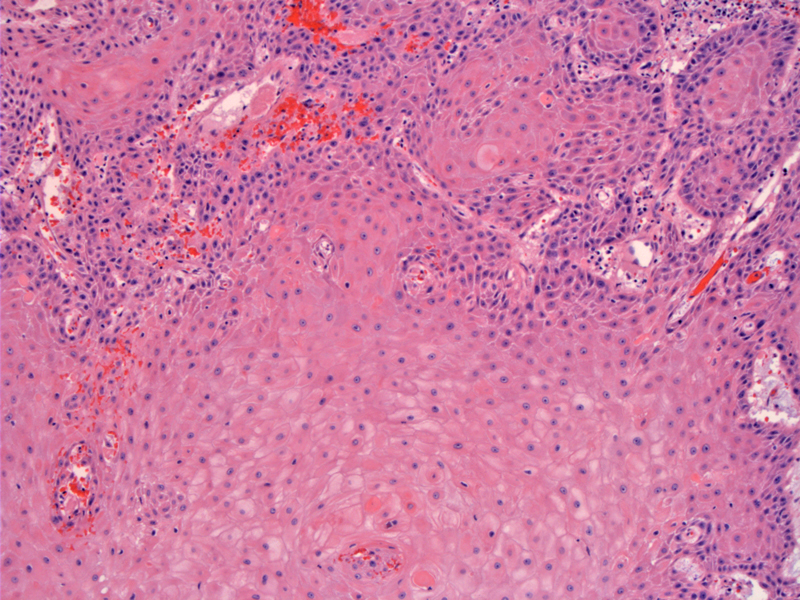System: Head and Neck: Larynx: Neoplastic: Verrucous Carcinoma

System: Head and Neck: Larynx: Neoplastic: Verrucous Carcinoma



1 Image
2 Image
3 Image
4 Image
5 Image
6 Image
7 Image
accounts for only 1-3% of laryngeal ca
laryngeal VC is often described as a bulky exophytic lesion with a papillomatous appearance projecting from the larynx;
According to a national survey in the United States, surgery as a single modality was used in >60% of all LVC cases registered between 1985 and 1996 (Koch)
Plagerized from Huang: initial control of LVC with RT is less reliable compared with reports from surgical series; however, local recurrence was almost always salvaged successfully, resulting in disease-specific survival rates equivalent to those of surgical series. Neither anaplastic transformation nor unusual metastasis development was observed in this series.
Strojan P, Smid L, Cizmarevic B, Zagar T, Auersperg M. Verrucous carcinoma of the larynx: determining the best treatment option. Eur J Surg Oncol. 2006 Nov;32(9):984-8.
O'Sullivan B, Warde P, Keane T, Irish J, Cummings B, Payne D. Outcome following radiotherapy in verrucous carcinoma of the larynx. Int J Radiat Oncol Biol Phys. 1995 Jun 15;32(3):611-7.
Huang SH, Lockwood G, Irish J, Ringash J, Cummings B, Waldron J, Kim J, Dawson LA, Bayley A, Hope A, O'Sullivan B. Truths and myths about radiotherapy for verrucous carcinoma of larynx. Int J Radiat Oncol Biol Phys. 2009 Mar 15;73(4):1110-5.
B.B. Koch, D.K. Trask and H.T. Hoffman et al., National survey of head and neck verrucous carcinoma: Patterns of presentation, care, and outcome, Cancer 92 (2001), 110–120.